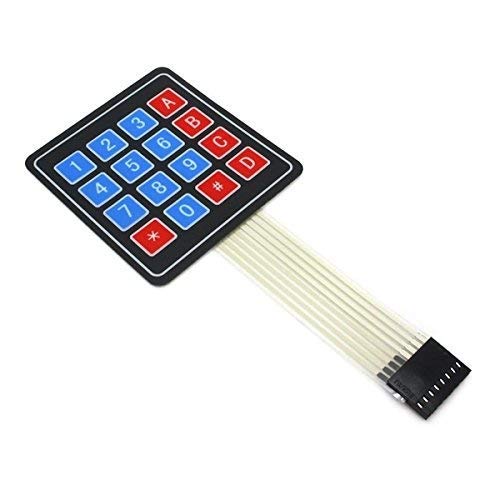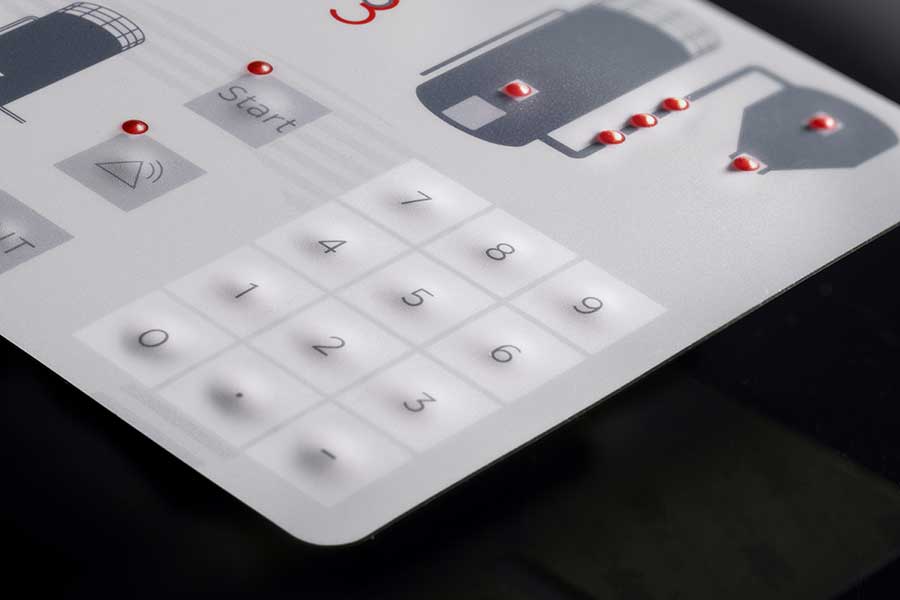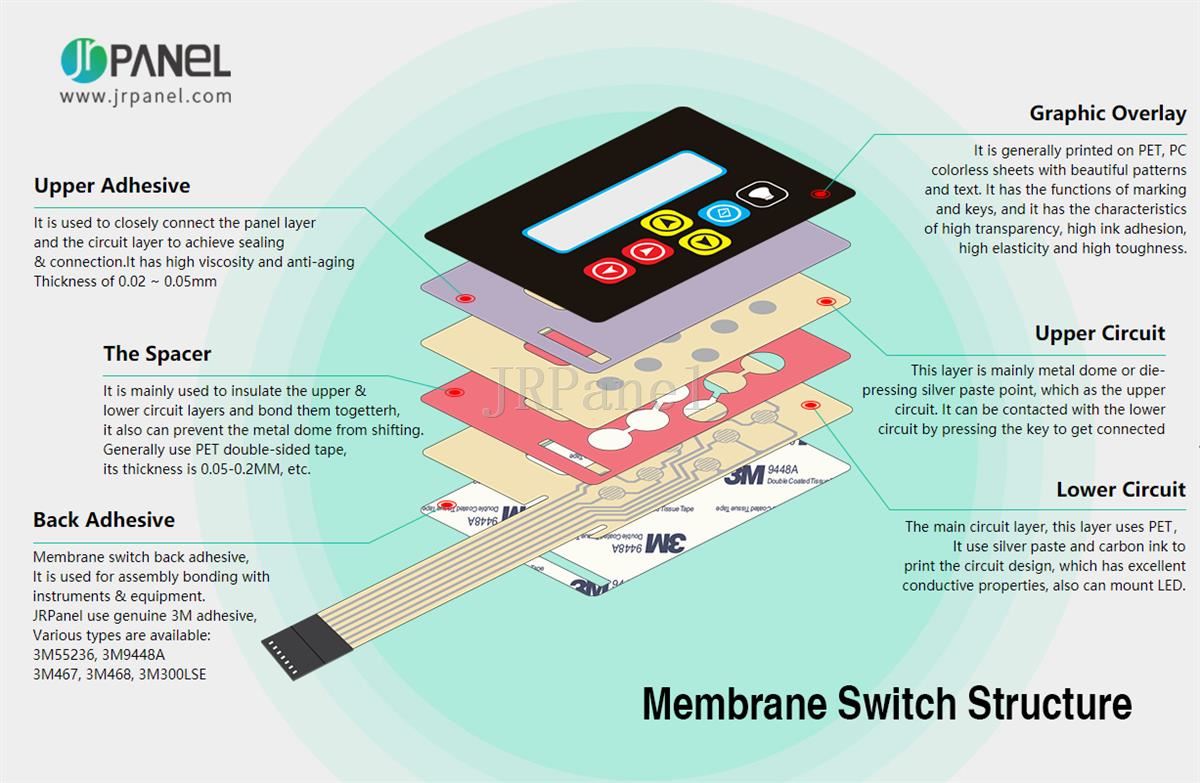How to Choose the Right Membrane Switch for Your Next Project
How to Choose the Right Membrane Switch for Your Next Project
Blog Article
Understanding Membrane Switches Over: The Key to Long Lasting and Reputable Controls
Membrane changes represent an important element of modern interface layout, blending functionality with resilience in various applications. As we check out the ins and outs of membrane switches, it ends up being clear that their duty in improving control systems is both extensive and complicated, raising questions concerning just how best to take advantage of their abilities in future developments.
What Are Membrane Layer Buttons?
Membrane buttons are a sophisticated solution in the realm of individual interface technology, integrating functionality and design flawlessly. These tools function as a user interface between customers and digital systems, integrating several parts right into a portable style. Generally constructed from flexible, thin layers of materials, membrane layer switches are designed to react to touch, enabling individuals to engage with machinery and digital gadgets efficiently.
The main components of a membrane switch consist of a printed circuit layer, visuals overlay, and a spacer layer that protects against unplanned activation. The graphic overlay can be personalized to reflect brand name identification or customer choices, improving appearances while making sure functionality. Membrane layer switches are typically made use of in various applications, consisting of medical tools, consumer electronic devices, and industrial tools, owing to their resilience and resistance to ecological aspects such as dampness and dust.
Among the essential advantages of membrane layer switches is their capacity to stand up to wear and tear, making them suitable for high-traffic atmospheres. Additionally, they are lightweight and require marginal room, allowing for cutting-edge designs in product development. On the whole, membrane layer changes represent a functional and effective selection for contemporary digital user interfaces, marrying modern technology with user-centric layout principles.

Exactly How Membrane Layer Switches Over Work
The operation of membrane layer changes joints on a straightforward yet effective device that translates customer input right into digital signals. These buttons are composed of numerous layers, normally including a graphic overlay, a spacer layer, and a circuit layer. When a user presses the button, the top layer warps, permitting a conductive aspect in the circuit layer to reach a matching conductive pad on the underside of the graphic overlay. This contact shuts the circuit and sends out a digital signal to the tool, showing that the button has actually been turned on.
The layout of membrane switches can differ, but they typically integrate domes or tactile aspects to offer comments to the customer, boosting the total experience. The materials utilized in membrane switches, such as polyester or polycarbonate, add to their toughness and resistance to environmental elements, consisting of wetness and dirt. The printed circuits are commonly encapsulated, which secures them from wear and tear over time.

Advantages of Membrane Buttons
Among the key advantages of membrane layer switches is their flexibility in design, enabling them to be personalized to fulfill particular user needs and aesthetic requirements. This flexibility includes numerous markets, where various forms, sizes, and shades can be utilized to improve individual communication and aesthetic charm.
Furthermore, membrane layer buttons are known for their durability. Constructed from durable materials, they are immune to dust, dampness, Our site and physical wear, which dramatically extends their lifespan contrasted to standard mechanical buttons. This sturdiness makes them particularly ideal for high-traffic settings and applications needing longevity.

In addition, membrane switches offer a streamlined account, bring about a thinner layout that can be integrated into various tools without adding bulk. This feature not just boosts the aesthetic charm but also adds to a more ergonomic product design.

Applications of Membrane Buttons
Straightforward and versatile, membrane buttons discover applications throughout a vast array of markets, consisting of medical gadgets, customer electronic devices, and industrial equipment. In the medical field, these buttons are integral to gadgets such as diagnostic equipment, client surveillance systems, and mixture pumps, where reliability and convenience of cleansing are crucial. Their capacity to stand up to rough settings and preserve performance makes them perfect for such applications.
In consumer electronics, membrane switches are made use of in items like microwaves, cleaning makers, and push-button controls - membrane switch. Their smooth style permits user-friendly individual interfaces, improving the general individual experience while giving sturdiness and resistance to damage
Industrial equipment also profits from membrane buttons, specifically in control panels for equipment and automation systems. These buttons offer protection versus dirt and moisture, making sure constant performance in difficult atmospheres. Additionally, their customizable functions allow producers to tailor them to particular functional demands, improving efficiency and capability.
Picking the Right Membrane Layer Change
When selecting a membrane layer switch, it is important to consider different factors that influence efficiency and suitability for details applications. The primary considerations consist of ecological conditions, tactile comments, resilience, and layout specifications.
First, examine the operating atmosphere; buttons exposed to wetness, chemicals, or severe temperatures call for specific materials to make certain long life and functionality. Next, examine the demand for tactile responses. Relying on user communication, some applications might gain from a tactile reaction to Resources confirm activation, while others might prefer a non-tactile design for aesthetic reasons.
Resilience is one more critical factor; membrane layer switches must be made to stand up to frequent use, effects, and abrasion. Make sure the picked switch can sustain the expected lifecycle, particularly in high-usage scenarios.
Verdict
To conclude, membrane layer switches over work as important elements in the style of trusted and sturdy control systems throughout numerous markets. Their portable layout, incorporated with durable building and customizable features, boosts customer communication while ensuring longevity in demanding environments. The convenience of membrane layer changes enables tailored solutions that satisfy particular operational demands, enhancing their significance in modern-day innovation. membrane switch. As sectors remain to evolve, the relevance of incorporating effective membrane switch remedies Source can not be overstated.
Membrane switches over represent a crucial aspect of modern-day interface layout, blending performance with strength in numerous applications.Membrane layer switches are an advanced service in the world of user interface technology, combining performance and layout perfectly. Typically built from adaptable, slim layers of materials, membrane switches are designed to respond to touch, enabling individuals to interact with machinery and electronic gadgets properly.
The design of membrane buttons can differ, but they commonly integrate domes or tactile elements to supply responses to the customer, boosting the total experience.In conclusion, membrane changes serve as necessary parts in the layout of dependable and long lasting control systems throughout numerous markets.
Report this page